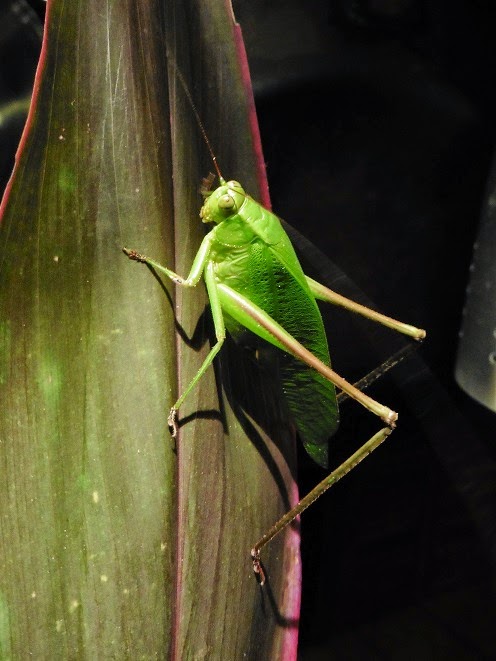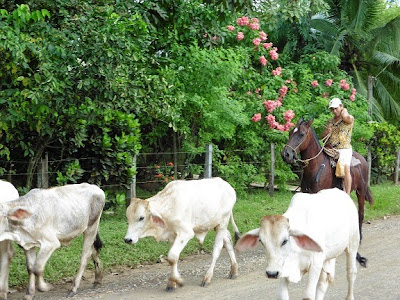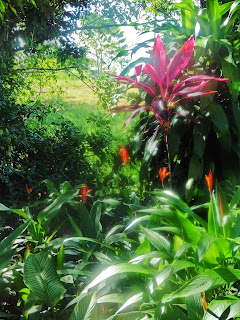It’s pretty easy to eat well here when there is fresh fruit, vegetables and herbs for the picking but the grocery store is a drive away. At the tiny local grocery store, the staples costs more than you might expect and there is no such thing as pre-prepared food. All of this means that meals tend to be simple and close to their source. Almost everything is organic and local with free range eggs coming from Karen and Mike’s just down the road,
yogurt and cheese from Tad and Cook’s cows one town away, and the fish we have regularly enjoyed from the fishing village at Playa Bejuco, a nice walk down the hill. I have bought tomatoes, garlic, and onions from the store but almost everything else has come from the land here. Marie grows pineapples, coconuts, starfruit,
 |
| Starfruit or Carambola as it is known locally |
 |
| Papaya tree |
Hank and Marie’s worker, Mai has turned a small hill down near the quebrada into a bean patch. He is growing hundreds of bean plants that will provide his family with red beans for the entire year, once they are picked, shelled and dried. Here are some plants that he harvested so we could make gallo pinto (red beans and rice). Since the beans were fresh, they took only about twenty minutes to cook and yes, they were delicious.
 |
| Red beans in their shells |












%2Bresized.JPG)
resized.JPG)
.JPG)
.JPG)
.JPG)
resized.JPG)
.JPG)
%2Bsmaller%2Bsize.JPG)
%2Bsmaller%2Bsize.JPG)
%2Bsmaller%2Bsize.JPG)
%2Bsmaller%2Bsize.jpg)
%2Bsmaller%2Bsize.jpg)
%2Bsmaller%2Bsize.jpg)
smaller%2Bsize.jpg)
.JPG)
.JPG)
.JPG)
.JPG)
.JPG)
.JPG)
.JPG)
.JPG)
.JPG)
.JPG)
.JPG)
.JPG)
.JPG)







